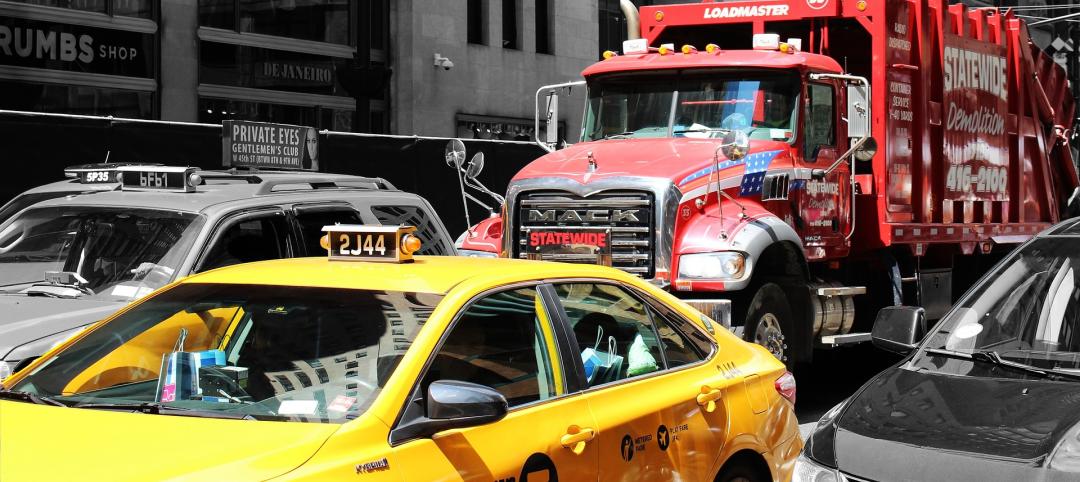New York City is installing its first large-scale porous pavement installation along seven miles of roadway in Brooklyn.
The project will keep 35 million gallons of stormwater out of the combined sewer system each year, according to a news release. Porous pavement will be installed along the curb line of streets, where stormwater typically drains towards a catch basin on the corner. The pavement can withstand the weight of motor vehicles, including trucks. New York has piloted the use of several different types of porous pavement for a few years in different boroughs, but this is the first large-scale implementation.
“Climate change is bringing with it rainstorms that can overwhelm our sewers and cause flooding across the five boroughs, which is why we are investing in tools that will divert rainwater away from the sewer system, such as porous pavement,” said New York City Department of Environmental Protection Commissioner Rohit T. Aggarwala. “Brooklyn got hit particularly hard by Tropical Storm Ophelia last September and this new porous pavement will help to ease pressure on the sewer system and protect residents during future storms.”
Over the last decade, the city has built the nation’s largest Green Infrastructure Program, the release says. Green Infrastructure intercepts stormwater before it can drain into sewers, thereby preserving some capacity in the system and helping to prevent, or reduce, flooding, backups, and overflows. Green infrastructure includes porous pavement, curbside rain gardens, permeable pavers, green or blue roofs, and underground storage. To date the city has built more than 13,000 green infrastructure installations, including more than 9,000 curbside rain gardens.
Related Stories
Urban Planning | Oct 30, 2024
Bridging the gap: How early architect involvement can revolutionize a city’s capital improvement plans
Capital Improvement Plans (CIPs) typically span three to five years and outline future city projects and their costs. While they set the stage, the design and construction of these projects often extend beyond the CIP window, leading to a disconnect between the initial budget and evolving project scope. This can result in financial shortfalls, forcing cities to cut back on critical project features.
Designers | Sep 20, 2024
The growing moral responsibility of designing for shade
Elliot Glassman, AIA, NCARB, LEED AP BD+C, CPHD, Building Performance Leader, CannonDesign, makes the argument for architects to consider better shade solutions through these four strategies.
Multifamily Housing | Aug 21, 2024
Nation's leading multifamily developer expands into infrastructure
Greystar's strategy for infrastructure is driven by the shifting landscape of today's cities—primarily in the increased digitization, urbanization, and transitions to clean energy.
Urban Planning | Aug 15, 2024
The magic of L.A.’s Melrose Mile
Great streets are generally not initially curated or willed into being. Rather, they emerge organically from unintentional synergies of commercial, business, cultural and economic drivers. L.A.’s Melrose Avenue is a prime example.
MFPRO+ News | Jul 22, 2024
6 multifamily WAFX 2024 Prize winners
Over 30 projects tackling global challenges such as climate change, public health, and social inequality have been named winners of the World Architecture Festival’s WAFX Awards.
Urban Planning | Jun 10, 2024
N.Y. governor halts Manhattan traffic congestion pricing plan
New York Gov. Kathy Hochul says she is indefinitely delaying the implementation of congestion pricing in Manhattan just weeks before the plan was to take effect. The controversial plan would have had drivers pay $15 to enter Manhattan south of 60th street.
Urban Planning | May 28, 2024
‘Flowing’ design emphasizes interaction at Bellevue, Wash., development
The three-tower 1,030,000-sf office and retail development designed by Graphite Design Group in collaboration with Compton Design Office for Vulcan Real Estate is attracting some of the world’s largest names in tech and hospitality.
Mixed-Use | May 22, 2024
Multifamily properties above ground-floor grocers continue to see positive rental premiums
Optimizing land usage is becoming an even bigger priority for developers. In some city centers, many large grocery stores sprawl across valuable land.
Sustainable Development | May 10, 2024
Nature as the city: Why it’s time for a new framework to guide development
NBBJ leaders Jonathan Ward and Margaret Montgomery explore five inspirational ideas they are actively integrating into projects to ensure more healthy, natural cities.
Urban Planning | Apr 12, 2024
Popular Denver e-bike voucher program aids carbon reduction goals
Denver’s e-bike voucher program that helps citizens pay for e-bikes, a component of the city’s carbon reduction plan, has proven extremely popular with residents. Earlier this year, Denver’s effort to get residents to swap some motor vehicle trips for bike trips ran out of vouchers in less than 10 minutes after the program opened to online applications.

















